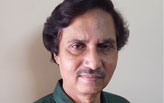A Collective Social Conscience – Contemporary Odia Poetry

Social concerns such as caste discrimination, exploitation of workers, women’s issues, among others, dot the landscape of contemporary Odia poetry, drawing attention to marginalised voices in the post-liberalisation era.
It was shortly after 1950 that modernism with its Western ethos, was initiated in Odia poetry. A big break from the progressive and the romantic trends of that time, it dominated Odisha’s poetic scene for more than two decades. Though modernism brought newness to the form and style of Odia poetry, its association with extreme individualism and obscurantism alienated it from the socio-cultural milieu. For this reason, it gradually lost its ground and paved the way for alternative poetic development in the 1980s when visible changes occurred in the content and form of Odia poetry.
By 1990, Odia poetry had gained a foothold on its own soil. Since then, its poetic language has acquired a level of transparency and expressiveness, bringing it closer to the reader. Senior poets such as Ramakanta Rath, Sitakant Mahapatra, Soubhagya Kumar Mishra, Jagannath Prasad Das, Rajendra Kishore Panda, Harihara Mishra, Pratibha Satpathy and Haraprasad Das continued writing in the years that followed. Their poetry expressed not only love, nostalgia and earthly attachment but also a philosophical quest within the complexities of human existence.
The neo-liberal economy of the post 1990 era, with its market forces and culture of consumerism, influenced the lives of people as never before. The changed priorities affected marginal farmers and farm workers the most. In Odisha, they continue to migrate to distant places to work under inhuman conditions; it is an issue that Odia poetry addresses seriously. Prasanna Kumar Mishra in his poem Truck Dalare Sanatana (Sanatana on the Truck), writes,
Riding on a truck
Sanatana, where are you going?
To Therubhali or Damanjodi?
Wherever you go, there are hills.
And everywhere the hills are to be broken into dust.
(In Truck Dalare Sanatana. Odisha Book Store, 1991)
The concern for social issues has increased in the post-liberalisation period and several Odia poets have expressed their solidarity with mass movements against the acquisition of land for mining and industry. Reacting to the police firing at Kalinga Nagar where thirteen tribal persons were killed in 2006, Jayanta Mahapatra says,
They are also children of our land
Janga Jarika
Deori Tiria
Sudam Barla
whose bows and arrows were of no use
before the police bullets
where women ran into the village pond
to save their own lives.
(Bulibara Ichha. In Jhankar, 2006)
Apart from the issue of mass displacement, the progressive poets of Odisha, with their strong social commitment, have been raising a collective voice of protest against persisting problems such as poverty, destitution, caste and communal violence, and atrocities against women. Poets like Kumar Hasan, Sadashiba Dash, Hussain Rabigandhi, Aswini Kumar Mishra, Lenin Kumar, among many others, have taken a radical approach. Meanwhile, poets of the younger generation have adopted a pro-people humanitarian stance. They are realists trying to explore the intricacies of contemporary social process, and an intense, engaging idiom has become the hallmark of their poetry. Poets like Biraja Bal, Saroj Mohanty, Kedar Mishra, Bharat Majhi, Durga Prasad Panda, Ajay Pradhan, Pabitramohan Dash, Hemanta Dalpati and many others are keen to combine innovation with commitment. In Biraja Bal’s Bonsai there is a call for suppressed humanity to break free,
One day I told the banyan tree
that the whole sky
stretching from one horizon to another
is all yours, the brown-crusted earth
too belongs to you,
you have the strength to crack open
the hardest of rocks;
can’t you break a mere cement pot!
(Bonsai. In Indian Literature, No.234, 2006)
No-one has been able to decide
if untouchability
is a colour or a touch,
a feeling or an ideal;
whether it resides
in one who touches
or the one who is touched.
(Coaching Centre. In Asprushya, Odisha Dalit Sahitya & Art Academy, 2001)
Ask
the flustered women
blowing hard to keep the fire alight
as they push in the damp firewood,
what are they?
They can never never answer
womanhood is a dazzling tongue of flame.
(Pachara / Ask. In Chandrabhaga, No.7, 2003)



